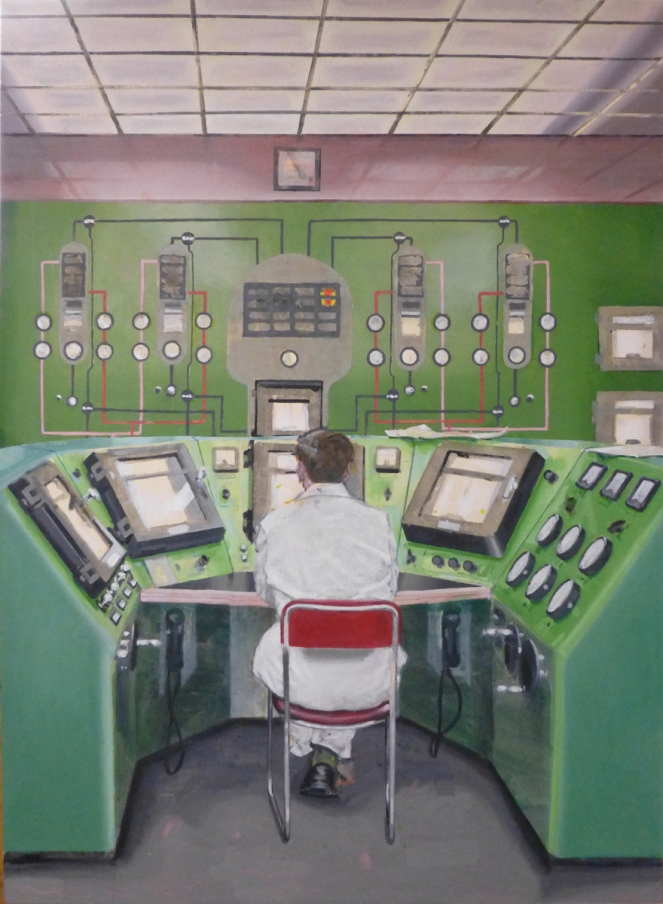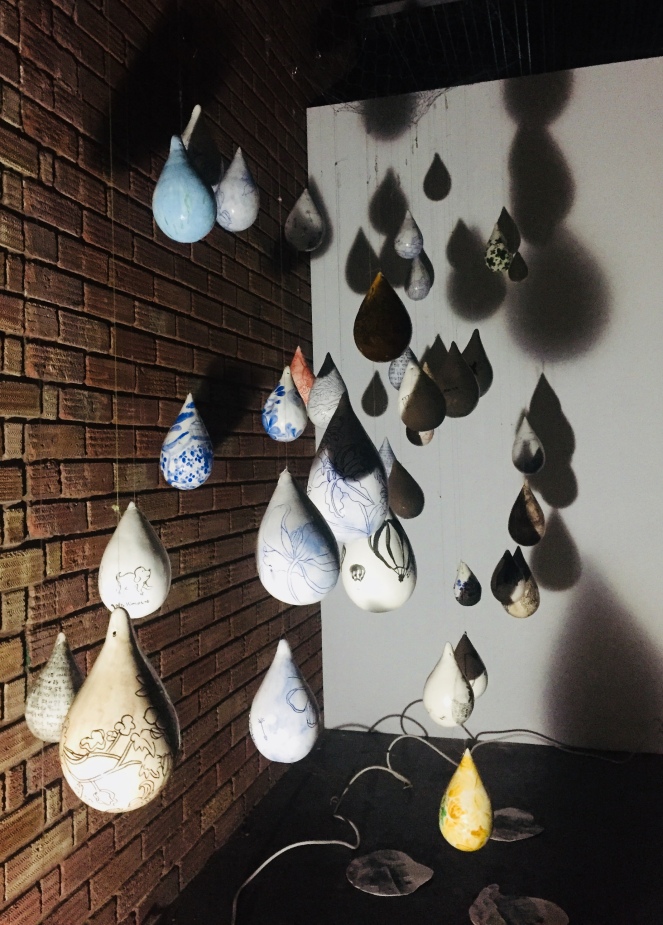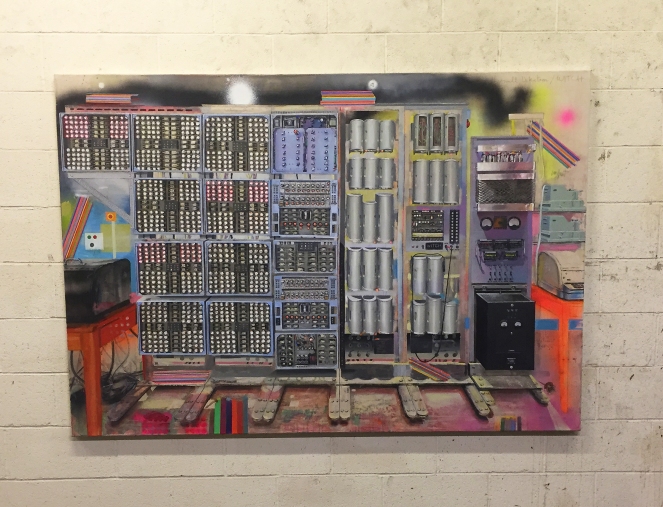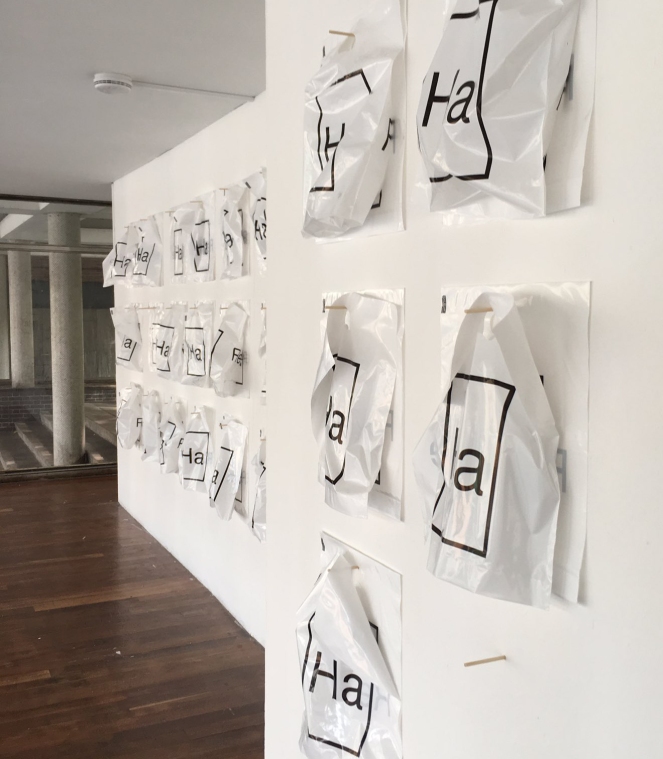
Image by Marta Kochanek Photography
Renowned Coventry-based artist John Yeadon will be opening his latest solo show at the CET Building on 18th May. This will feature a retrospective view of paintings produced in the 1980s, which were deemed shocking and controversial at the time, alongside a collection of his more recent work.
We’ve interviewed John to find out more about what we can expect from this forthcoming show:
For those unfamiliar with your work, sum up how you would describe yourself as an artist.
I don’t bother or need to describe myself as an artist, I think that’s for others to do, but I’m happy to talk about the work, which is eclectic. I do, and have done different things at different times in my life and I have reinvented myself a number of times. Essentially I am a painter/printmaker but have explored a number of different territories, as a student at Hornsey and the RCA I was interested in archetypes significantly the Mandala, then in the 70s I was involved in making large silk screen anti-fascist banners, what I regarded as street art, portable paintings, later, photography and I spent a decade working digitally before I retired after 30 years teaching Fine Art at Coventry University (Lanchester Poly, as was) and returned to painting.
I have never had any commercial success, never involved myself in the gallery system or art market. I think the market and the ‘silly money’ has harmed art dramatically. When I left the Royal College of Art the art market hardly existed, there was Bond Street and Cork Street and that was about it, there weren’t any collectors of contemporary art in Britain. Unlike the YBAs (Thatcher’s children) I come from a generation who were critical of the capitalist gallery system. Since the 70s this market has grown immeasurably. But today’s vast art market is not anymore democratic than the elitist small art market of the 60s and 70s, and like pluralism, the market aspires to mediocrity. I have taught all my life, I used to regard teaching in Higher Education as state patronage of the artist, I don’t think like this now, it is not the case today. Teaching has given me the freedom to do whatever I wished to do no matter how unpopular the work might be and not having to pander to a gallery as to what sells. Artists can end on a treadmill, repeating themselves and if successful, they become play things of the rich. Why would you wish to sell a painting to someone who would not even invite you to dinner! I prefer my freedom. Freedom to please yourself is also one of the advantages of being ignored. Even though I have not been involved in the commercial art world I have had over 30 one person exhibitions throughout Britain and abroad, mostly curated and organised by myself. It’s important to get the work ‘out there’.
Others have described my work as: pornographic, transgressive, humorous, political, oppositional, resistance, disquieting, difficult, obsessive, unfashionable and mostly going against the grain. It’s not artists who make up definitions and descriptions of themselves or their work, but critics, journalists and curators. All definitions are limiting. It’s also like asking an Impressionist to explain Impressionism, well, the artist never invented the term or the category!
“What do you mean by Impressionism?” Might be the artists reply.
The 1980s work was categorised as Grotesque Realism or Theatrical Realism.
Obviously there are some descriptions I like and others I don’t. Grotesque Realism was good for me as I developed a great interest in Rabelais, Bakhtin, the Medieval Carnival and the satire of Jonathan Swift. I like the over the top, the larger than life, of the grotesque, where ‘more is more’. For me, Carnival is the history of the ‘popular culture’, a peoples culture. An extra political aspect of the world of human relations which Bakhtin described as a ‘second world…a second life outside officialdom’.
I like to exploit contradictions, paradox and ambivalence and challenge preconceptions. I once said that “paradox was the dialectic of life”, in a slightly more profound moment. My paintings are also somewhere in between autobiography and fiction, but that’s probably true about most art.
At Coventry University I ran an Art History/Liberal Studies Course on Art and Sexuality, (I was going to call it Querys, but was never sure how to spell that, maybe ‘Queeries’). Erotic art was something I was personally interested in, I hoped it wasn’t too limited a topic and that there was enough substance there to make a seminar series. A novel subject but not mainstream nor everybody’s cup of tea. At the time I was using sexual references in my work as a metaphor, as part of an allegory.
During my preparation I realised that in every age whether that be Egyptian, Greek, Roman, Medieval, Renaissance, seventeenth century to the twentieth century, or from the art and creation myths of Egypt and Greece, and from the role of women in art, or sexual identity, whether it be from Leonardo to Picasso, Michelangelo to Duchamp, Artemisia Gentilischi to Jo Spence, Fragonard to Hockney, from Caravaggio to Francis Bacon, sexuality is the central theme. I realised that sexuality was fundamental to the history of art as it is to the narrative of our lives. Any art history that ignores sexuality is an incomplete art history and they do ignore it.
Identity is a important theme of art, but ‘branding’ seems important for artists these days. A simple ‘bite size’ description, a signature work. Make it simple. It’s all about the market. Why would you wish to pin yourself down. Actors would run a mile rather than being typecast. Keep them guessing, that’s what I say. There are many different Picassos. Why limit yourself. Like Rabelais, I am interested in lists and in the 2000s I produced a ‘Miscellany of words and phrases associated with food and eating’. Tellingly, ‘branding’ was next to dehorning and castration!
(See johnyeadon.com ART, Full English: Text).
Tell us what featured in your risqué “Dirty Tricks” exhibition at The Herbert in 1984, that we’ll get to see again in “What’s the Meaning of This?”
I don’t regard my work as risqué in any moral sense, I think the painting are highly moral. Essentially I am asking questions. Though I suppose one always risks something when painting. Shouldn’t all artists be taking risks, isn’t that what it’s all about, it’s the viewer who might see the work as risqué in a moral or ethical sense. This is not the artist’s job, self censorship has to be avoided. Some of my work took a kind of courage, non of it comes easy, one might even say it took bravery, even if only overcoming self doubt, but once painted it’s the gallery that has to show courage and the viewer to be up to being challenged. However I do accept that some of the work is provocative and transgressive but its important to expose contradictions and challenge taboos.
Artists need to be extremists, it’s no good upholding the status quo, that’s not a creative strategy. You’ll never do anything new doing that!
There are a number of works from the Dirty Tricks exhibition in this show, probably many of the paintings that the Coventry Evening Telegraph regarded as ‘smut’ or pornographic. But I cannot speak for what others find offensive. I think racism is offensive, homophobia, nuclear weapons, war, famine, violence, unemployment these are the real obscenities and not images of peoples bodies. My recent work is on the nuclear industry and 50s technology, maybe some will find this offensive, they probably should, but they won’t. Their moral focus and outrage is on bodies and bits of bodies. Kinda makes you to want to offend them!
It’s there in the title for this show. ‘What’s the Meaning of This?’ As I anticipate angry disapproval at what I have done.
How dare I

What impact did your “Dirty Tricks” exhibition have on your career as an artist?
What impact? Very little. Maybe that’s a bit disingenuous, but nothing noticeable, it did not directly lead anywhere. Most exhibitions don’t, most exhibitions are cul de sacs. Though Dirty Trick was shown at the Pentonville Gallery in London later in the year but that was not a result of the Herbert exhibition, as I had organised this earlier. Sandy Moffat of Glasgow School of Art did say that it was the Dirty Tricks exhibition and the Transmission Gallery in Glasgow which formed my reputation. However my inclusion in the British Art Show of 1985 was not a result of the Herbert show, but at that time the British Art Show was a genuine attempt to represent what was going on in the country and the curators visited studios throughout Britain. In Coventry John Thompson visited the Canal Basin Warehouse where I had a studio.
Having said that, it was a real privilege to show at the Herbert Art Gallery, I had two galleries (one of them now has been turned into storage), you could never get such a space in London unless you were a high profile international artist. I think provincial galleries have an important role in supporting emerging and mid career artists. Sadly the Herbert seems unwilling to curate exhibitions for Coventry or Midland based artists these days, preferring to buy in national touring shows from London museums which I think is curatorially lazy.
How do your recent paintings compare to the ones that you created over 30 years ago?
The 1980s paintings are bigger. Don’t know much more at the moment. The exercise of the exhibition is to compare the works, so I don’t want to predict. I want to look when the show is up. I’d like to be surprised. But who knows.
By comparing disparate work one might find a common denominator, I suppose I would like to find that. A unifying theme, or some underlying idea, that would tell me what to do next, but if I did discover such a thing, a little too late me thinks.
Thinking about this question and looking back at the work there seems to be an interest in ‘monsters’, often as a reference to nuclear weapons as in The Monster from the Nevada Desert, or my transcriptions of Goya’s Sleep of Reason Produces Monsters to my recent paintings of the WITCH computer and Sellafields Nuclear Power Station. Monsters refer back to Grotesque Realism, so maybe I’m still a Grotesque Realist. And that thought is unexpected.
I am curious to see the response of the audience to these 80s paintings in this new context 30 years on. To see how they have survived and what they mean today, how the meanings have transformed. In the 1980s in the face of AIDS paranoia and ‘gay blame’ I painted some homosexual propaganda paintings though not specifically referencing AIDS. Too many other artist were doing work on AIDS. Things were changing in the art world, figurative painting was in the ascendancy and abstract minimalism was out, conceptual formalists and video artists were looking for content and AIDS provided them with a ready made socio-political cause. I did not wish to join the bandwagon. Attitudes to homosexuality have changed, who would have thought that a Tory Government would introduce ‘same sex marriage’. How we see ourselves has changed and how others regard same sex relationships has also by and large transformed. The gay community has changed, the LGBTQ community is more inclusive. But institutional homophobia in the 80s was visceral, ‘gay plague’ paranoia was tangible. For instance, I applied to take out a mortgage with the Woolwich in the late 80s and had to have an AIDS test as I answered ‘yes’ to a question on homosexuality on a questionnaire produced by the company. I got my mortgage after waiting three weeks for the test results, the doctor did not inform me I was HIV negative, they told the Woolwich. I presumed I was okay when they approved the mortgage. Even so, the Woolwich insisted I take out insurance on my house in case I drop down dead owing them money.
Much is different today but we are still a divided and polarised nation as we were in the 1980s. It will be interesting to see how the paintings on sexuality are received in a less hostile and homophobic climate.
What is the reasoning behind placing the more recent works against the paintings you created in the 1980s?
That’s what happens when you do a retrospective. Work gets place next to each other from different periods.
I thought 70 was a good excuse to do a retrospective, though I could not do a full retrospective; too much work, too diverse and not enough space unless they gave me the run of a museum large space and that’s never going to happen.
So I had to be selective on what I show. As I am back painting, to show early paintings made sense. This exhibition is the second of three retrospective shows I am having in these twelve months. I showed my 1982 painting of the Harwell Dekatron WITCH computer the ‘Portrait of a Dead WITCH’ alongside my 2017 second version of the computer – ‘It’s Alive’. Bringing these two paintings together at the National Museum of Computing at Bletchley Park, the home of the original WITCH. Consequently the exhibition was called The Three Witches and has run for over three months at the museum. I am also having an exhibition at the Lanchester Research Gallery in February 2019. Bringing together the Travails of Blind Biff Jelly series and my paintings of my grandmother’s and mother’s ventriloquist dummies. In fact Biff’s first outing was the exhibition ‘Unbelievable Stories’ at the University’s Lanchester Gallery in 1988.
Some of the 80s work was badly damaged in my custom built shed which I use for storage when the roof leaked over ten years ago. A lot of work went into a skip. This exhibition has forced me to dig out and repair six paintings that were damaged yet saved from the skip! So I feel it’s well worth showing them again.

How do you expect the work that you created in the 80s will be received again in the same city 34 years later?
Who knows how it will be received, as I have said it will be interesting to see the reactions in this new context 30 years on. People do not do large figurative paintings these days so it will be interesting for me to see the response of younger artists to these works.
For me the viewer is not a passive consumer of the art. Looking is an intentional act and requires imagination. Looking requires thinking. As Duchamp pointed out, the viewer finishes off the work.
They provide the meaning. The viewer brings their imagination, understanding and personal experience to the work. They also can bring baggage, ignorance and prejudice to the work.
As Grayson Perry said, “you cannot like everything”, but it was a noisy reactionary minority who reacted badly to the work in 1984. It will be interesting to see if the Coventry Telegraph review the show or even do another editorial. I sent them a press release. But they probably won’t unless they think there’s a scandal.
We shall see.
What’s next for you as an artist?
I the short term I’m showing some of my digital work at the Coventry Pride Art Show also at the CET Building on June 1st. I very please about this and a great way to support Pride. I have the Lanchester Research Gallery exhibition in February 2019 and also in February a Coventry Dresden Arts Exchange exhibition at the Kreuzkirche (Church of the Holy Cross) in Dresden to commemorate the bombing of Dresden and the 60th anniversary of the twinning of the two cities. I hope to bring this exhibition to Coventry Cathedral, later in 2019. I need to do some grant applications for the Coventry Dresden Arts Exchange as I would like to continue the artists residencies in the cities and give more Coventry based artists the opportunity to visit and work in Dresden. It’s also great to welcome Dresden artist to Coventry.
I have my third painting of the WITCH computer in my studio to finish which will keep me occupied for some time. I’ll get a new shed. (Horse and bolted springs to mind). I think I should travel more and need more time to play my ’cello in local orchestras. The Burnley Orchestra is 100 years old this year and I will be going back to my home town in Lancashire to play with them later in the year, I have not played with them for over 50 years.
As for the long term, at 70 there really isn’t any. Bucket list?
Just paint and continue to annoy people.





































































